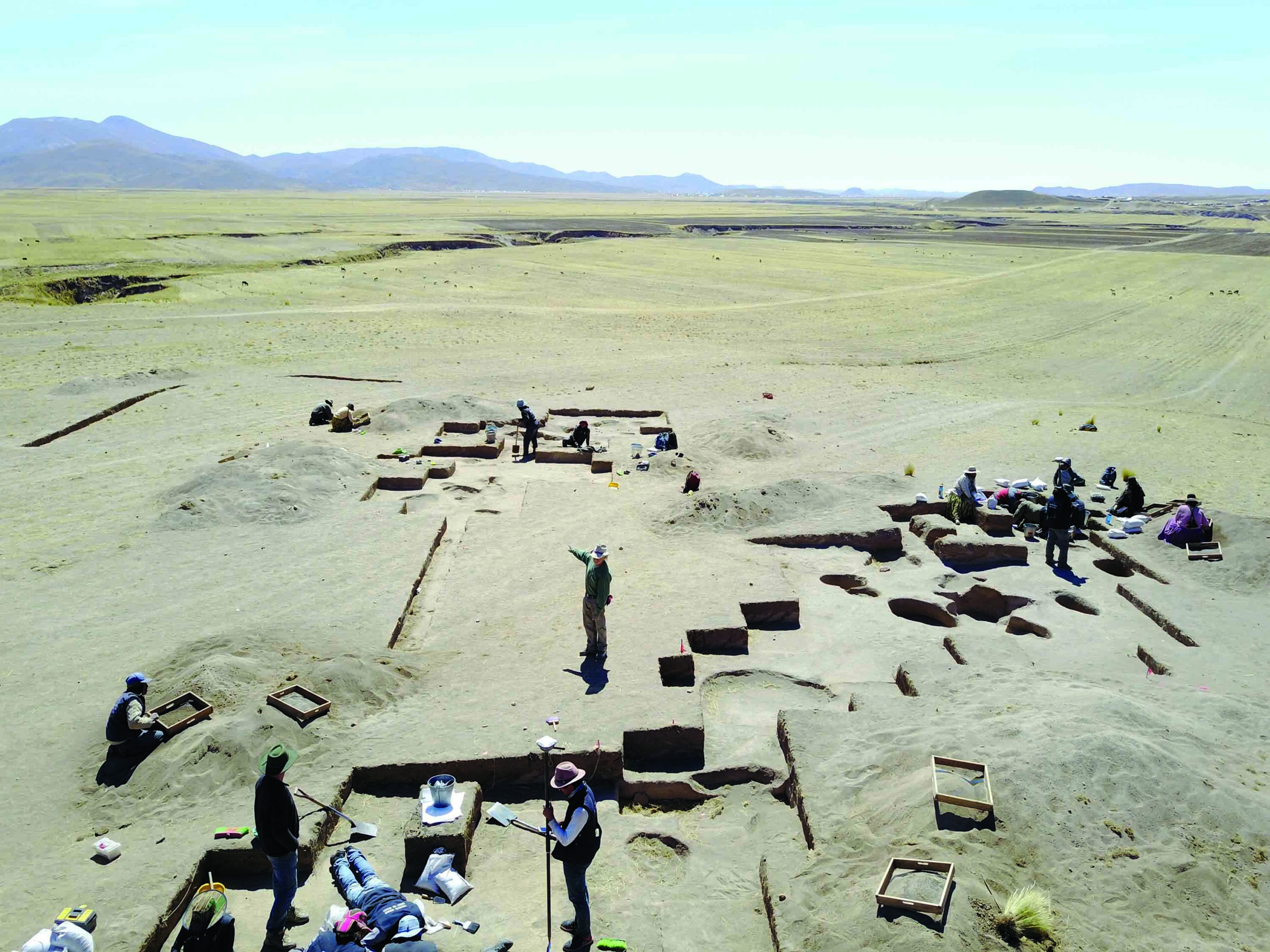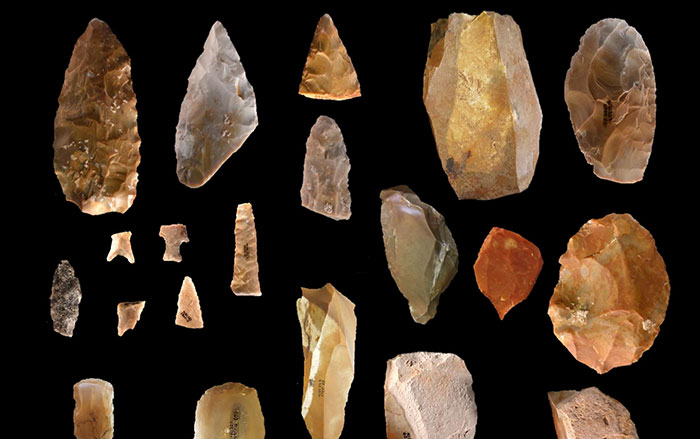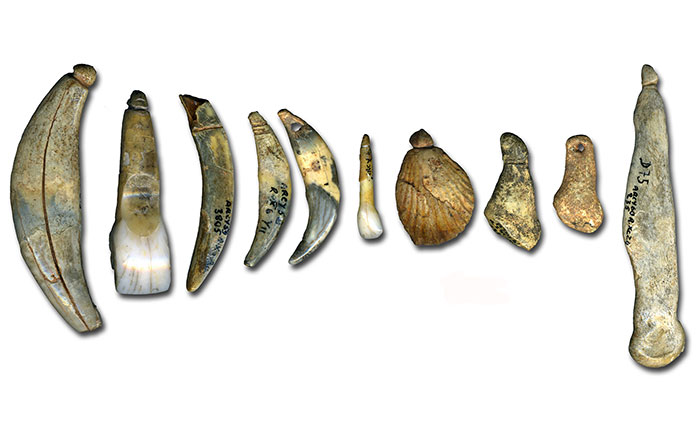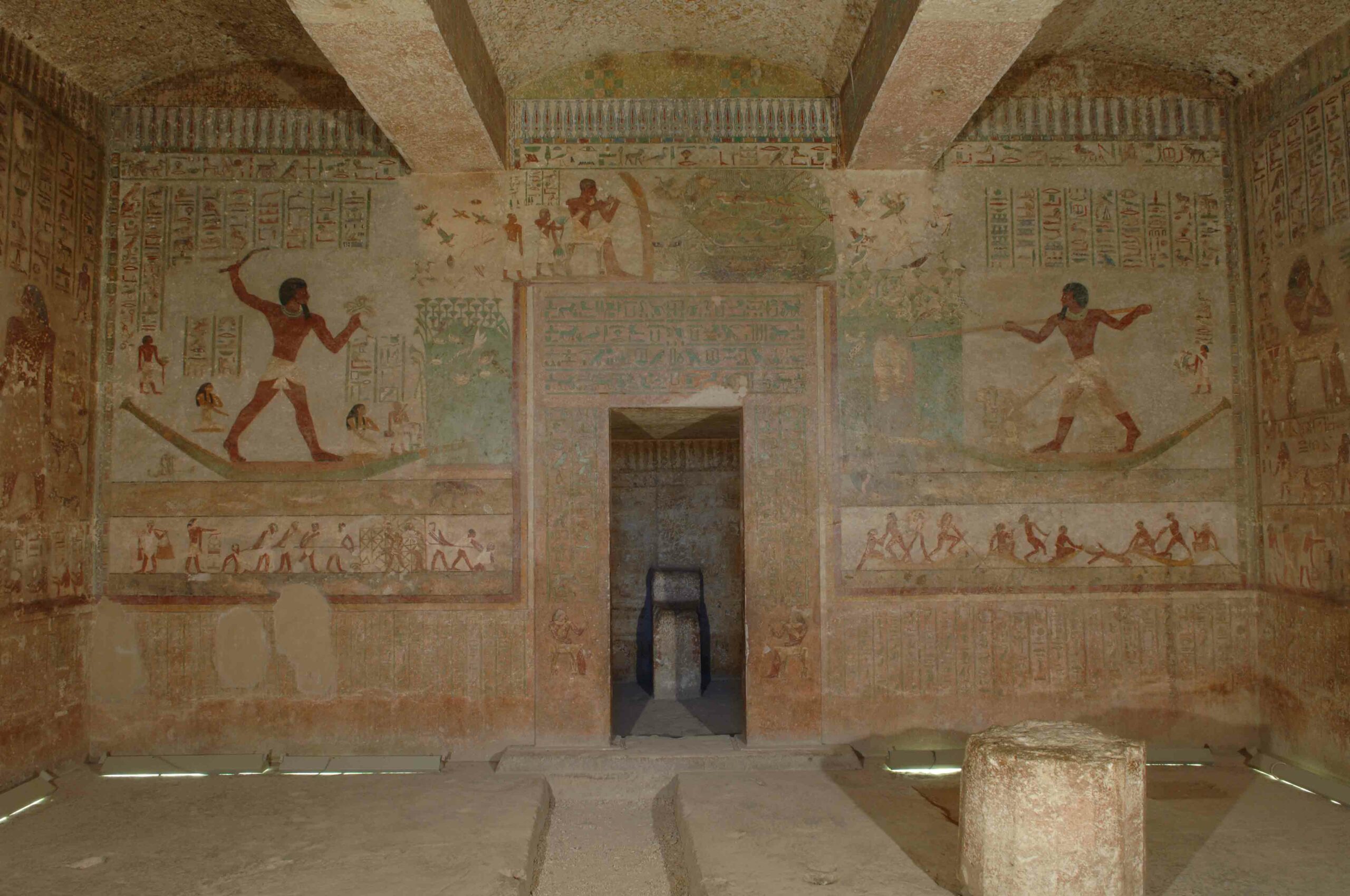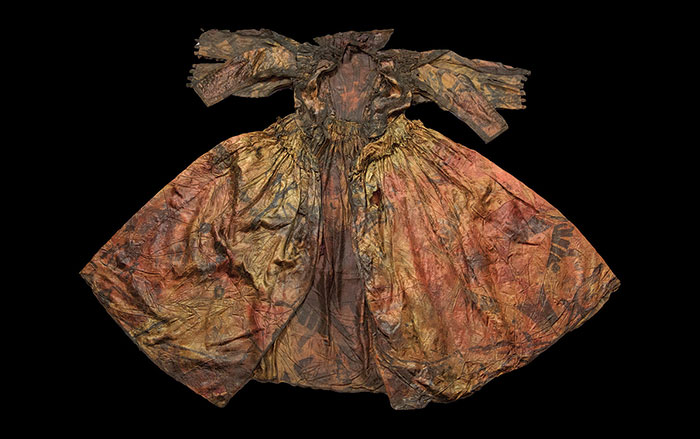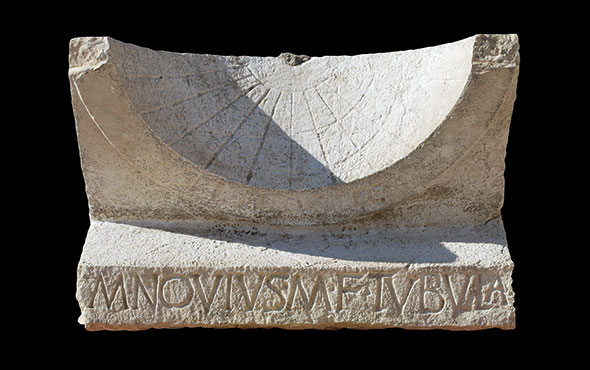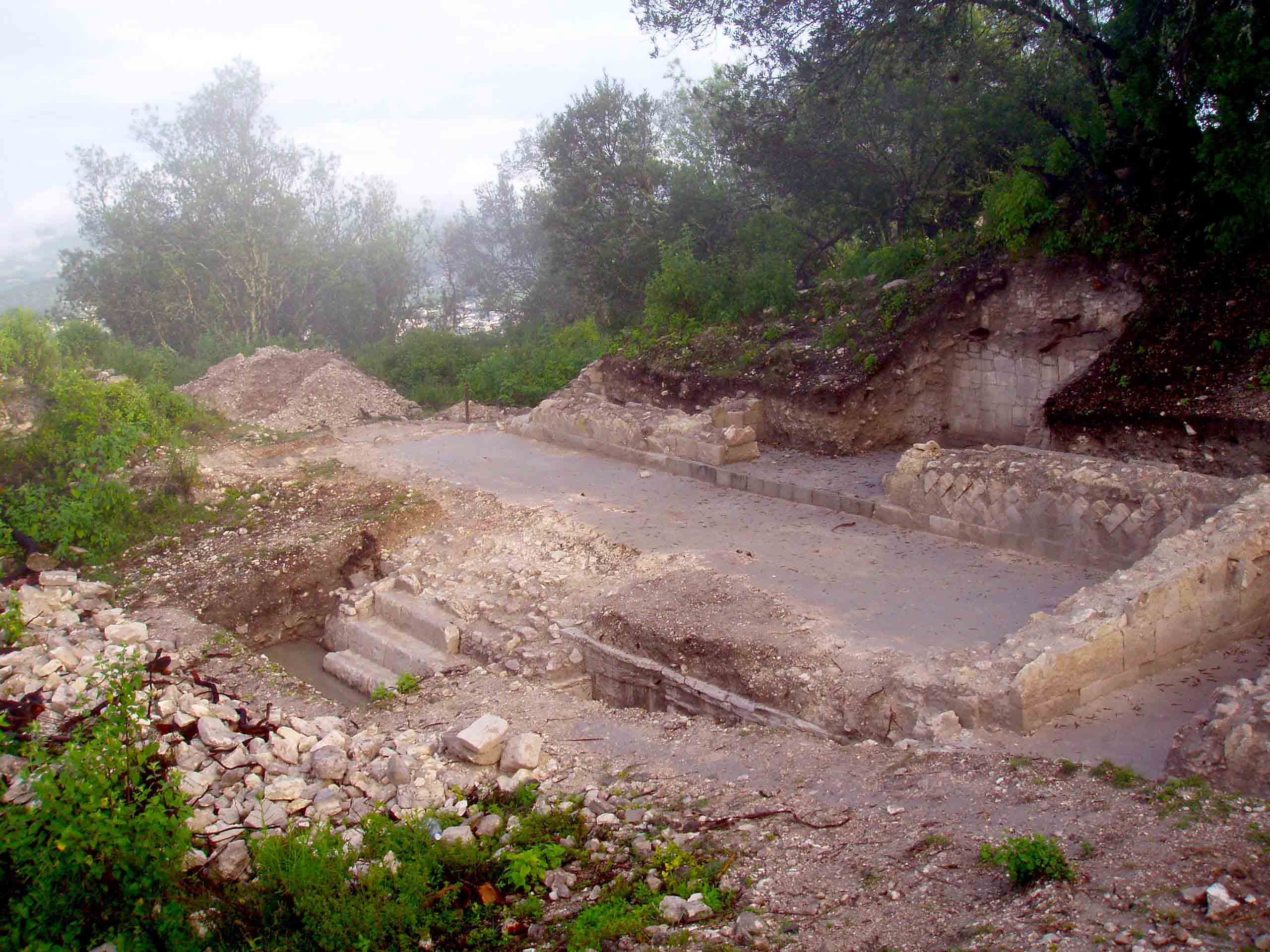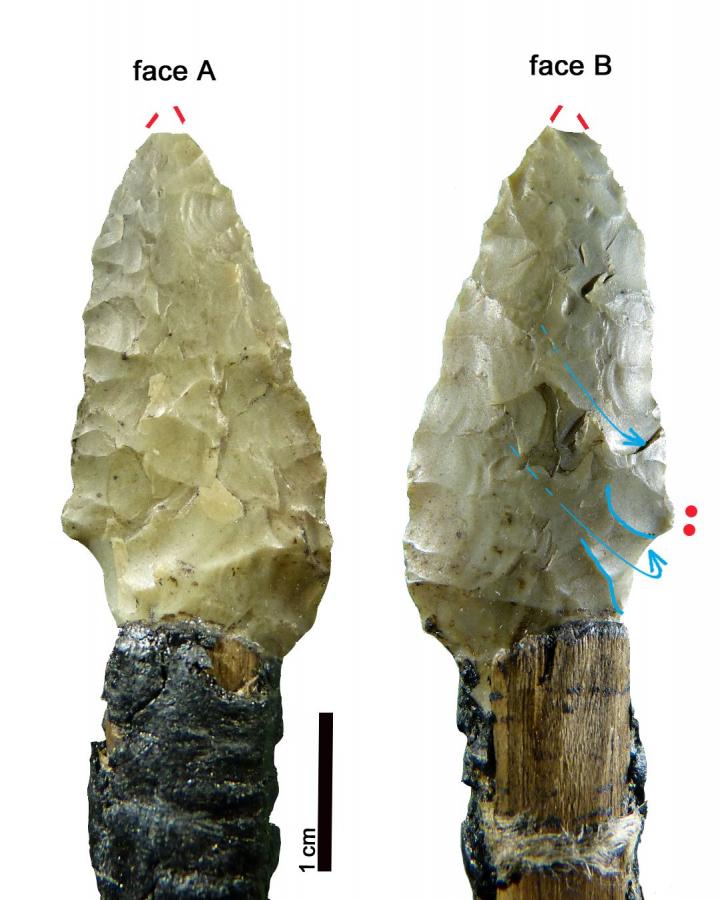
FLORENCE, ITALY—Live Science reports that a team led by archaeologist Ursula Wierer of Italy’s Soprintendenza Archeologia has examined the tools carried by the frozen mummy known as Ötzi the Iceman with high-powered microscopes and computed tomography scans. The 45-year-old man died in the Italian Alps sometime between 3370 and 3100 B.C., most likely due to a head injury or an arrow thought to have pierced an artery in in his shoulder. He was carrying a dagger, an end scraper, a borer, a flake, an antler retoucher, and two arrowheads at the time of his death. Wierer said an opaque patina and lack of wear on the end scraper and the borer suggests they had been recently sharpened, which may be the source of the cut found on Ötzi’s right hand. The wear on the other tools suggests Ötzi was right handed, as does the development of the right side of his body. Wierer and her colleagues said many of the tools were made of chert that may have been obtained from outcroppings some 40 miles away from the area where Ötzi is thought to have lived. The researchers also noted that the arrowheads resembled those typically made by cultures living in northern Italy, while the end scraper resembled blade tools typically found at lake dwelling sites in Switzerland and southern Germany. “I think we have to imagine that the trade at the time was already quite far-reaching for certain raw materials and certain products,” Wierer said. For more, go to “Ötzi’s Sartorial Splendor.”


